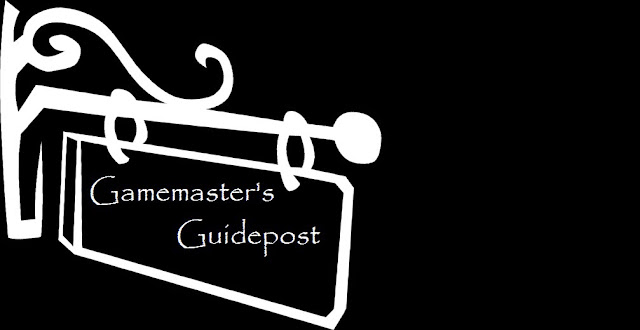As it oft times happens to me, a conversation can inspire a whole blog post. In this case a conversation with +Kyle Norton is the huckleberry. He asked “How do you deal with something like someone with Extra Attack 2 and Altered Time Rate 4 or a necromancer with a horde of minions?” And it’s really a good question because there’s not obvious solution. One thing Kyle mentioned was how he lets his speedster player collapse multiple actions into a single action and that got me thinking. What could you do with such a rule? We traded a few words back and forth and eventually I hit the blog, because hey, why waste a good idea?
Multiple Actions into a Single Action
To speed up combat simply compile multiple actions into one single action or roll. To do this use the following steps:
- Pick a specific Maneuver (e.g., All-Out Attack or Move and Attack) to affect all attacks.
- Determine the maximum number of attacks you could make in a single second of combat.
- Look up the number of attacks as Shots column from the Rapid Fire (p.B373), but shift the bonus gained up by one and add that to your base skill. For example, if a character could perform 14 attacks you’d get a +4 bonus to base skill.
- Add a “Rate of Fire” equal to your total number of attacks.
Make a single skill roll against your best attack (alternatively, if the GM wants to he can average the skill if using multiple attacks as well as damage – but that may be too complicated). For every point by which you succeed you hit with with an extra attack. Roll damage once.
The character can exclude actions from this if he wants. For example, if someone had Extra Attack 2 and Altered Time Rate 4 he could theoretically get off 16 attacks by taking All-Out Attack (Double) four times. This would give him a +4 to his attack skill and give his attack a RoF of 16. Alternatively, he could decide to split this up and take 3 All-Out Attack (Double) and 1 All-Out Defense (Double). He’d get a +3 to his attack skill, RoF of 12, and the effects of an All-Out Defense (Double) for that round. If the GM feels this is too beneficial each “mixed” maneuver reduces the skill bonus granted by one.
SSDD, Same Stuff, Different Dude
Having a horde of minions is thematically awesome – don’t be hating y’all, you know it’s awesome – but in game it’s a nightmare. “Oh, ummm, you have 20 zombies, so let me spend the next hour figuring out how they’re going to act and then making rolls.” There are two ways you can deal with lots of NPCs on the board:
Make it a Mob: Treat large grouped numbers of beings as a mob using the Swarm rules (p. B461). This lets you keep the danger of lots of combatants while keeping the rolls minimal.
Elevensies: Don’t roll the dice at all (or minimally, only for 20%), instead compare their skill to a roll of 11. If they succeed then resolve it normally (e.g., their target must attempt an Active Defense). For large groups of creatures look up the total number in the combat on the Size and Speed/Range Table in the Linear Measurement column and read the Size column as a bonus to their rolls (half the bonus for Active Defense rolls).
Picking Over the Bones
Speeding up combat can be important for some games – for others it’s all about the combat. In general, the GM is going to need to decide what’s best for his game. Alternatively, he can mix it up and make some fights use these rules with other fights using the basic rules. (“Mook” fights and “Boss” fights, if you will.) I personally like the idea of being able to skip over some combatants and get to the good stuff: player characters and important NPCs. It feels more like a simulated TV show or movie that way.


Thanks, I see a few new ideas here I might apply.
This comment has been removed by the author.
Thanks for inspiring me. 🙂
I rarely make use of giant hordes of enemies, but whenever I do, I basically use almost exactly the same idea you describe for one guy with lots of attacks. If they're a horde of identical characters then I roll once, looking up their number of the Rapid Fire bonus table, and applying the bonus to their skill, then they hit a total number of times equal to their margin of success +1.
Then since their damage is the same, I'll multiply the dice of damage and any bonuses by the number that hit a given target, roll it all at once, then multiply the target's DR by the number attacking them. So 15 dire rats are attacking Steve, 15 attacks gives +3, the rats have Brawling-14, so I roll versus a 17 and get an 8, success by 9. 10 rats hit Steve, each doing 1d+1 cutting damage, so I roll 10d+10, getting 45 points of damage, Steve has DR 4, multiplied by 10 that's 40, so he takes 41-36 = 5 points of damage.
Yeah, that's basically the swarm rules. It works quite well.